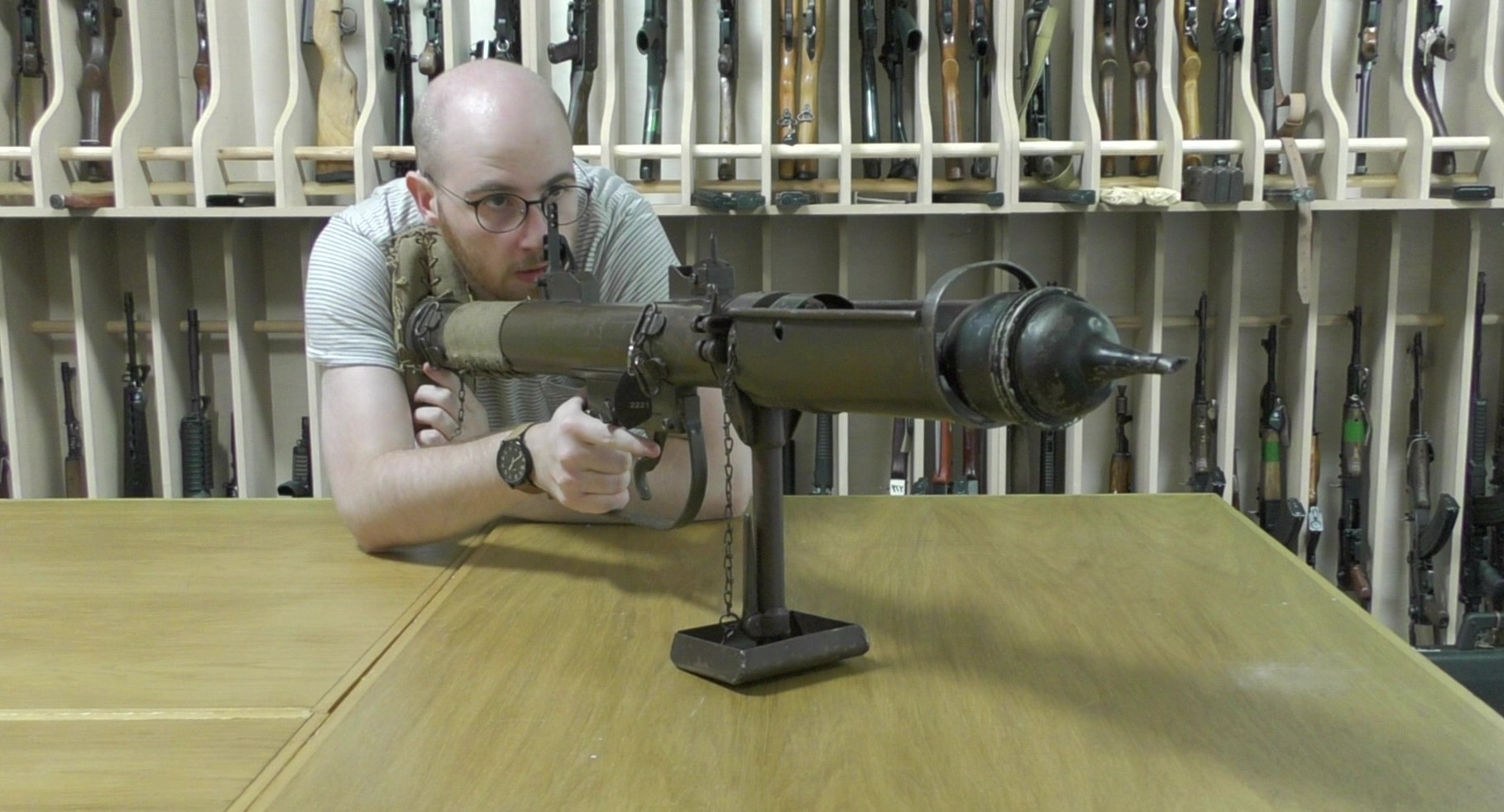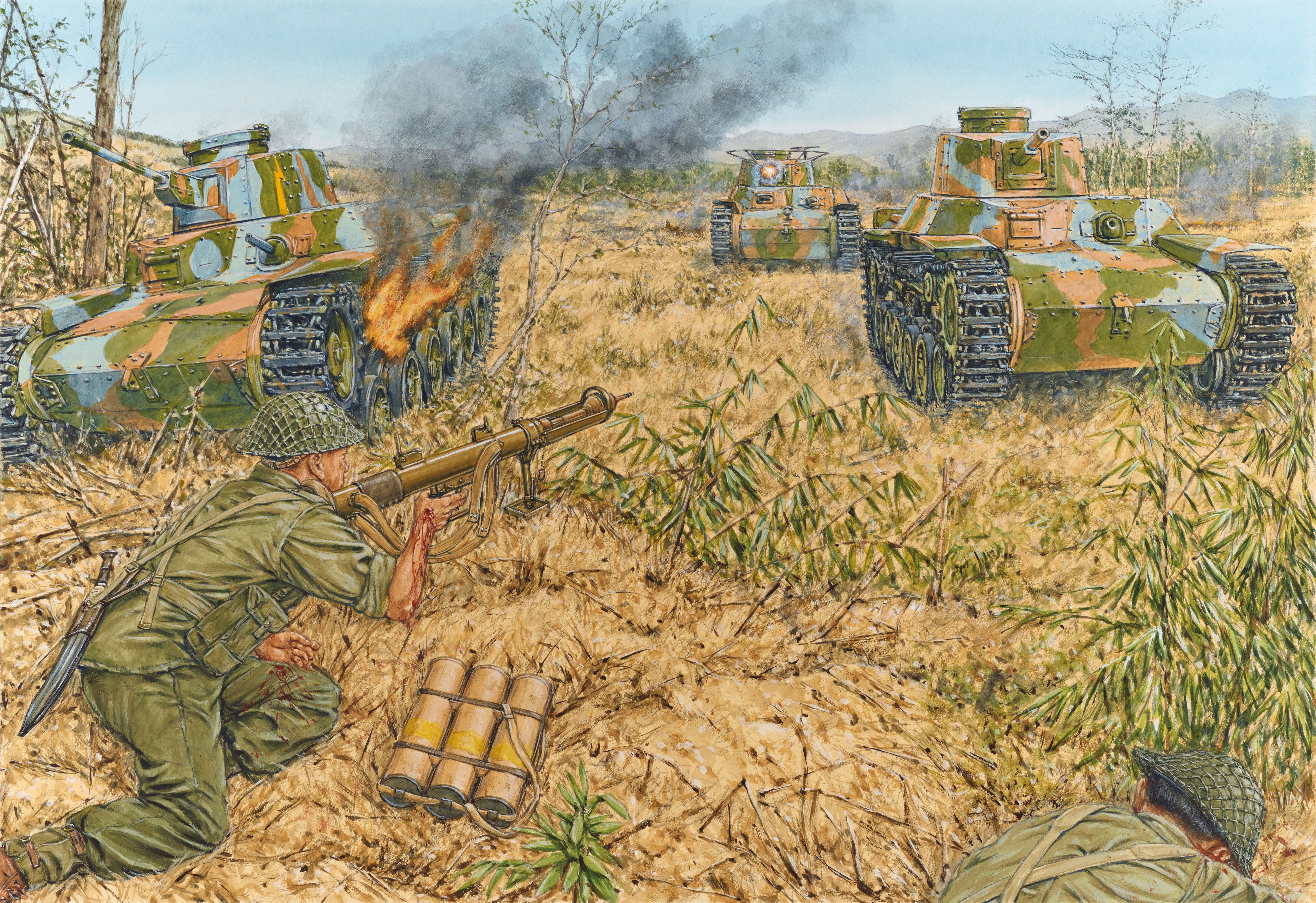On the blog today, author Matthew Moss answers a few questions about his latest Osprey title The PIAT, his interest in weaponry and more.

The author with an original PIAT and inert training round
Out of all the weapons, what drew you to the PIAT in particular?
Well, the PIAT is just an absolutely fascinating and very unusual weapon. Just the name, PIAT, is intriguing and its full name – Projector, Infantry, Anti-Tank – is even more fascinating.
It’s a very British answer to a serious problem – how do lightly armed infantry take on enemy tanks? The PIAT is actually a pretty misunderstood weapon and that was one of the things that drew me to it. I wanted to delve into the history, look at the original documents and reports and the accounts of the men who built it and actually used it in battle. I also wanted to see if its reputation was deserved. Many know it only as ‘that crazy British spring-powered bazooka’ but the engineering behind it is much more interesting (although it does have a very big spring that isn’t actually what projects the bomb)!
What surprising thing did you learn when you were researching?
I was surprised by a few things. First, just how effective it was. During the initial fighting after D-Day, the PIAT accounted for an impressive 7% of all German armoured fighting vehicles destroyed. That’s more than even the roving Allied air patrols! I was also surprised to learn just how versatile the PIAT was too. Not only could it take on Panzers but it could also be used as a light mortar, firing its bombs high up into the air and arcing back down to hit their targets – this was a popular tactic during the fighting in Italy. It was also quite useful in urban fighting, with the manual suggesting a technique called ‘house breaking’ where a PIAT gunner could fire a round at a wall blowing a hole for troops to run in and clear the building.
You mentioned effectiveness, just how effective was the PIAT?
It could take on almost any armoured vehicle it encountered – provided the man behind it was brave enough to get close. Its range was limited, it was most effective between 75yd and 100yd but there are so many accounts of men using them much, much closer. They wanted to make sure they hit their target, it was a weapon that took guts to use in action and that’s reflected by just how many men were awarded Victoria Crosses, Military Medals and Mentions in Dispatches for actions using the PIAT. Really brave men, some of them took on multiple enemy tanks single-handed. One of the great things about the Weapon series is that we can tell those stories. Understanding the human element of a weapon’s story is essential.
There were many changes in weapons development in between the World Wars, what do you think was the greatest innovation in weaponry during this period and why?
That’s a really interesting question and it varies according to weapon type but for the average British infantryman going into action in 1940 his weapons hadn’t changed all that much from those that had been in use at the end of World War I. He was still armed with the Lee-Enfield rifle, the Vickers Gun and the Lewis Gun had been replaced by the Bren light machine gun. Conflict drives innovation and that’s certainly true of small arms. Tight budgets meant only a handful of weapons were developed or adopted by the British Army during the interwar period. The British Army had only just introduced the Boys Anti-Tank rifle in 1937 and by the end of 1940 it was obsolete – tank armour thickness just outran it! That’s when it was realised that a lightweight, mobile, anti-tank weapon was needed urgently – and development of the PIAT began.
Your previous Osprey title, The Sterling Submachine Gun, also looks at a weapon developed in World War II, what is it about this period that interests you?
The Sterling is a weapon most people associate with the Cold War because it had such a long service life. When I wrote my book looking at it I wanted to emphasise just how long it took to enter service, nearly ten years. There’s some speculation about whether early versions of the Sterling saw any use during the war. With development beginning in 1942, the Sterling was well on its way to being perfected by the end of the war but it was never issued to troops in significant numbers. It was an excellent weapon and a worthy replacement for the STEN. As a historian I’m very interested in the technological development of weapons and conflict always drives innovation. George Patchett, the designer of the Sterling, could see the STEN’s shortcomings and thought he could do better. It’s the same with the PIAT, an anti-tank weapon that could be carried by infantry was desperately needed and the innovation of engineers like Stewart Blacker and Millis Jefferis created a weapon that could do the job.
What are you working on next?
At the moment I’m working on a history of the Winchester Repeating Arms Company’s role during World War I. They produced hundreds of thousands of firearms, including rifles, shotguns and machine guns, as well as millions of rounds ammunition and artillery shells for the allied war effort. I’m also very busy with my project The Armourer’s Bench (www.armourersbench.com), a multi-media project where I and colleagues look at the design, development and use of all sorts of weapons ranging from firearms to tanks to aircraft. I’m lucky enough to be able to examine surviving examples of some of these weapons and tell their stories through in-depth articles and videos.
Check out Matthew's previous post on the PIAT here and order a copy of the book from the website now!


Comments
You must be logged in to comment on this post. Click here to log in.
Submit your comment